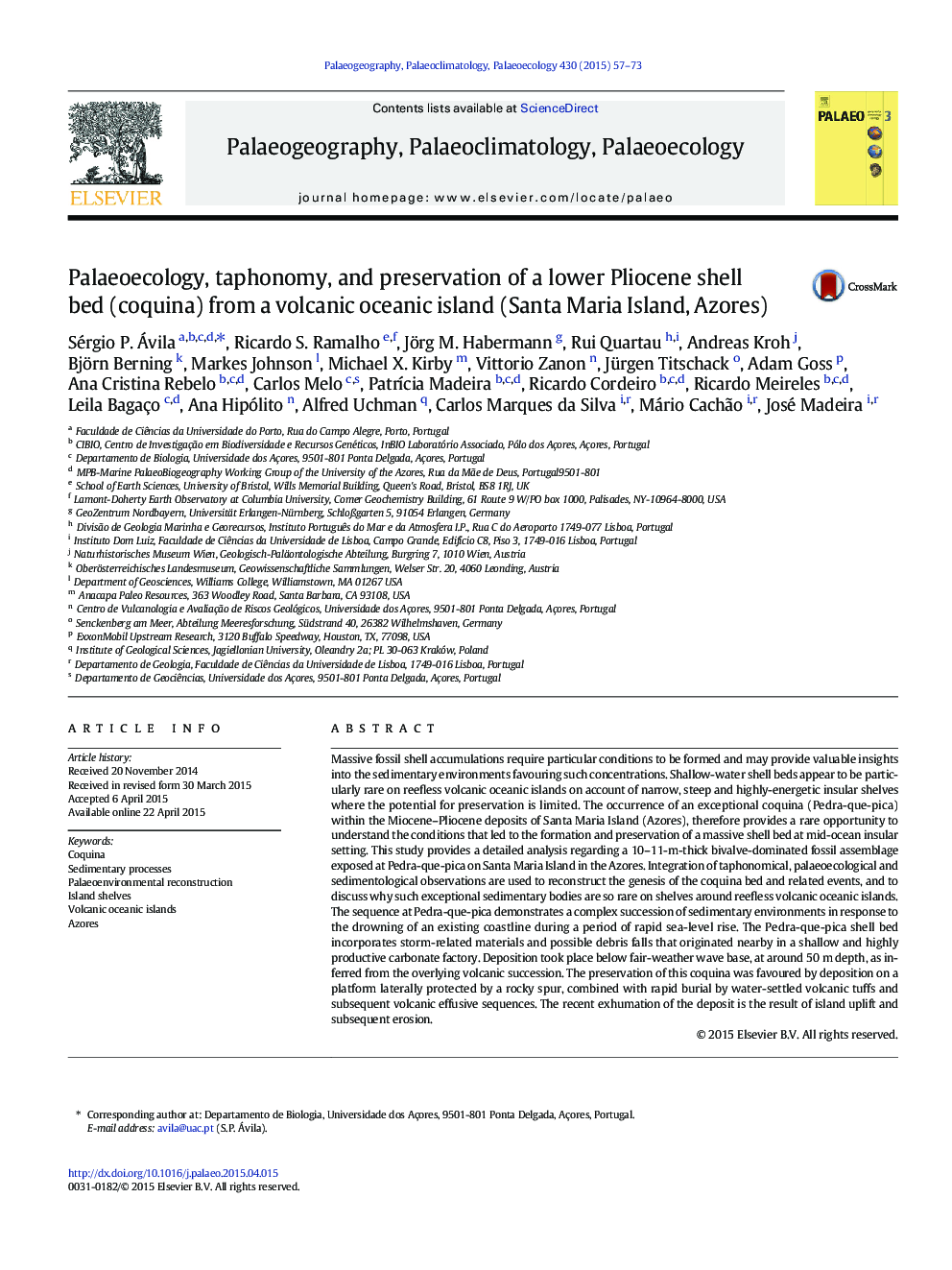| Article ID | Journal | Published Year | Pages | File Type |
|---|---|---|---|---|
| 4465943 | Palaeogeography, Palaeoclimatology, Palaeoecology | 2015 | 17 Pages |
•Massive fossil shell beds are very rare in volcanic oceanic islands.•Pedra-que-pica coquina is one of the world's largest coquinas formed and preserved in an insular shelf environment.•Storms and debris fall acted to bring sediments into a depocenter, where they accumulated, protected by a spur.•Deposition took place below fair-weather wave base over a platform estimated as > 10,000 m2 in area.•The recent exhumation of the fossiliferous deposits of Pedra-que-pica is the result of island uplift and erosion.
Massive fossil shell accumulations require particular conditions to be formed and may provide valuable insights into the sedimentary environments favouring such concentrations. Shallow-water shell beds appear to be particularly rare on reefless volcanic oceanic islands on account of narrow, steep and highly-energetic insular shelves where the potential for preservation is limited. The occurrence of an exceptional coquina (Pedra-que-pica) within the Miocene–Pliocene deposits of Santa Maria Island (Azores), therefore provides a rare opportunity to understand the conditions that led to the formation and preservation of a massive shell bed at mid-ocean insular setting. This study provides a detailed analysis regarding a 10–11-m-thick bivalve-dominated fossil assemblage exposed at Pedra-que-pica on Santa Maria Island in the Azores. Integration of taphonomical, palaeoecological and sedimentological observations are used to reconstruct the genesis of the coquina bed and related events, and to discuss why such exceptional sedimentary bodies are so rare on shelves around reefless volcanic oceanic islands.The sequence at Pedra-que-pica demonstrates a complex succession of sedimentary environments in response to the drowning of an existing coastline during a period of rapid sea-level rise. The Pedra-que-pica shell bed incorporates storm-related materials and possible debris falls that originated nearby in a shallow and highly productive carbonate factory. Deposition took place below fair-weather wave base, at around 50 m depth, as inferred from the overlying volcanic succession. The preservation of this coquina was favoured by deposition on a platform laterally protected by a rocky spur, combined with rapid burial by water-settled volcanic tuffs and subsequent volcanic effusive sequences. The recent exhumation of the deposit is the result of island uplift and subsequent erosion.
